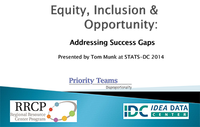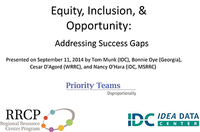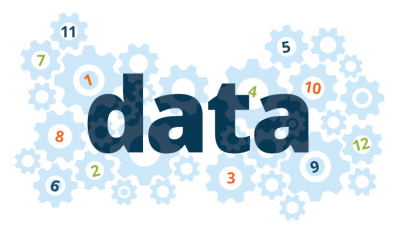Site Search
Results 1 - 6 of 6
Format: Guides, Papers, and Reports
Equity, Inclusion, and Opportunity: Addressing Success Gaps, White PaperThis white paper focuses on elements of equity, inclusion, and opportunity that can minimize or eliminate success gaps among different groups of students. It provides the research-based background that guided development of a complementary rubric that schools or districts can use to systematically examine the root causes of success gaps among groups of their students. The white paper has been updated recently and now includes considerations for children as young as preschool.
Format: Presentations
Equity, Inclusion and Opportunity: Addressing Success GapsThe presentation introduces a research-based guidance document and self-assessment rubric designed to help districts and schools identify the root causes of "success gaps" (for example, in test scores, suspension or graduation rates, or course credits) for some groups of students, thereby helping schools to improve and equalize results for all students.
Format: Presentations
Equity, Inclusion, and Opportunity: Addressing Success Gaps via the SSIP ProcessPresenters introduced a research-based guidance document and self-assessment rubric designed by OSEP's Disproportionality Priority Team to help districts and schools identify the root causes of "success gaps" for some groups of students, thereby helping to improve and equalize results for all students. As an example, presenters used Georgia's SSIP process, focused on graduation for students with disabilities.
Format: Presentations
What Data Can Tell Us – and What It Can’t: How to Be Sure We Know What Our Data MeansValidity is about more than results—it is determined by the question asked, the data collection design, and analysis. In this session, presenters led a discussion on what the data can, and cannot, say about outcomes, using examples from a selection of Part B and Part C indicators. Questions posed included: What is the difference between student outcomes and program performance? Can your data tell you which states, districts, or programs are performing better? What policy questions would you like to know about that your data currently cannot answer?
Format: Presentations
Equity, Inclusion, and Opportunity: Getting SSIP Results by Addressing Success GapsThe presentation provides a self-assessment rubric that can help states and local districts view their school/district programs and practices with an "equity" lens and help states and LEAs understand the reasons for discrepancies in outcomes between certain groups of students. Helpful handouts are included.
Format: Online Applications
The Uses and Limits of Data: Supporting Data Quality With a Strong Data ChainThis online learning module provides a general overview of how the methods and design of data collection and analysis affect interpretation of the data. The module presents the different links in the data chain (e.g., defining the question, measurement strategy) and describes how each link contributes to quality of data and data analyses. The module also includes examples from a selection of Part B and Part C SPP/APR indicators to illustrate how each step in the data chain contributes to the integrity of the data and its interpretation







